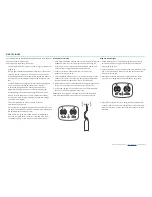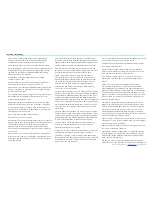
For more product information visit |
www.FatShark.com
| All Rights Reserved
FIRST FLIGHTS
The following training program has been developed to teach beginner
pilots how to control a drone racer.
Before you begin, keep these tips in mind:
•
To get started, run all early flights via line-of-sight, or without the
goggles on.
•
In flight, apply measured, deliberate movements of the control
sticks; do not jam the controls to the limits. The controls will
respond proportionally, move them a little bit and the response
will be slow, move them aggressively and the response will be
fast.
•
For the first flights, all flying should take place in the beginner
mode (with the left switch up or away from the pilot).
In advanced flying modes the Shark Quad will fly more
aggressively, limiting the efficacy of this training program.
•
Avoid applying throttle movement aggresively up or down,
which will cause the quad to rise or plummet sinusoidally.
Get accustomed to carefully managing throttle to manage a
controlled rise or decent.
•
Select a flying area with a level, smooth surface, no
obstructions and no wind.
•
During early line-of-sight training, keep an eye on the LEDs near
the eye of the Shark Quad, which will indicate a low battery with
red flashing when the battery is low.
• Each step in this guide is intended to be performed with at
least one complete battery. Take your time and if you’re not
comfortable with a certain step, fly a few extra batteries.
Step 1: Hover Training
1. Each battery delivered with the Shark Quad comes with a tether
wrapped around it. For this step, tie the end of the string to a
water bottle, power on the quadcopter and radio and set the
quadcopter on the ground behind the water bottle.
2.
With your left hand, advance the throttle to make the
quadcopter rise into the air.
3. Find the balance between more or less power to command the
quadcopter to hover. The tether is a hard limit that will prevent
the Shark Quad from getting too high or too fast at first.
4.
Balance the position of the quadcopter by using your right hand
to gently correct forward, back, left and right movement.
5.
In this step, the goal is to keep the quadcopter hovering above
the anchor without making the tether taut.
TIP:
If the pilot struggles with hitting the end of the string and
then the ground and back and forth, try shortening the tether.
Step 2: Ground Flight
1. Spend the duration of this battery giving the quad minimal
thrust and sliding on the ground, steering the Shark Quad
around the flying area.
2.
With the aircraft on the ground and the throttle just below hover
power, press forward on the pitch stick and observe how the
model moves forward.
3.
Experiment with forward and back (pitch), and side to side
(roll) control, making the Shark Quad slide on the ground.
4.
Experiment with yaw control, making the Shark Quad rotate
on the ground. Observe how when the front of the quadcopter
changes, the controls on the right stick also change in relative
meaning.































